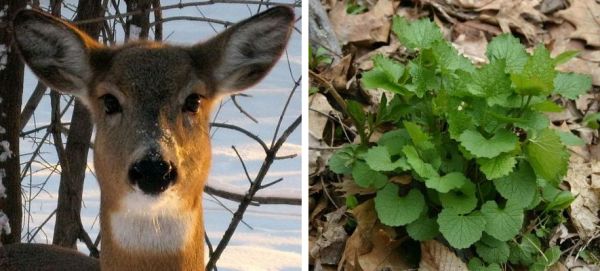
If you like native plants you’re probably dismayed by the increase of invasive garlic mustard (Alliaria petiolata) in Pennsylvania’s woods.
Garlic mustard has become more abundant at the same time that Pennsylvania’s deer population has exploded. Since deer don’t eat garlic mustard, observers assumed the plant’s increase was directly tied to the fact that deer eat natives and not this invasive alien.
But the relationship is more complicated than that.
At October’s meeting of the Botanical Society of Western Pennsylvania, Dr. J. Mason Heberling presented conclusions he’s drawn after studying the interaction of garlic mustard, native plants, and deer from a 13 year experiment at Fox Chapel’s Trillium Trail.
It turns out that garlic mustard likes more sun than it normally gets in Pennsylvania’s summer woods so when deer over browse native plants their shade goes away and garlic mustard thrives.
When deer are excluded native plants grow again, they shade the garlic mustard and it decreases.
Fewer deer? Less garlic mustard!
Everything is connected, often in amazing ways.
For more information, read the study abstract here at Interactions of White-tailed Deer and Invasive Plants in Forests of Eastern North America presented at the Botany 2016 Conference.
(photo of garlic mustard by Kate St. John. photo of deer by josephamaker2018 via Wikimedia Commons; click on the original)
Garlic mustard was brought over by the settlers and is very tasty in early spring. If you are walking in the woods when it first comes out, harvest it and eat it, you’ll be doing the natives a favor.